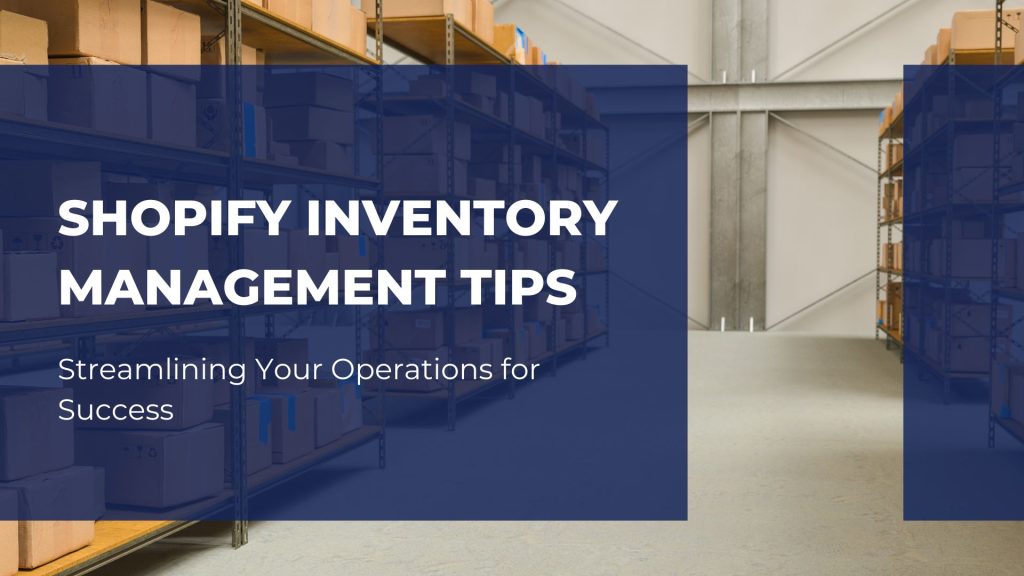Inventory management is a cornerstone of running a successful e-commerce business on Shopify. Efficiently managing your Shopify inventory can help you prevent stockouts, reduce carrying costs, optimize your operations, and enhance customer satisfaction.
So, what are the best practices and strategies that you, as a Shopify store holder, can use to streamline your inventory management processes? Let’s discuss it all in this blog post.
1. Conduct Regular Audits:
Regular inventory audits are the backbone of effective Shopify inventory management. Periodically compare your physical inventory to your Shopify store’s records. These audits help you identify discrepancies, track inventory accuracy, and spot potential issues early on. Use Shopify’s built-in inventory tracking tools or consider third-party apps designed for more sophisticated inventory management.
2. Set Reorder Points:
Determine the minimum quantity of a product you want to have in stock before reordering. This predetermined level is known as a reorder point. Setting reorder points for your products will help you avoid stockouts, ensuring you always have the necessary items on hand to fulfill customer orders. The choice of reorder point can vary based on the product’s popularity and lead time.
3. Embrace ABC Analysis:
ABC analysis is a classification method that categorizes your products into three groups: A (high-value, low-quantity), B (moderate-value, moderate-quantity), and C (low-value, high-quantity). This categorization allows you to prioritize your shopify inventory management efforts. Focus your attention and resources on managing high-value “A” items closely, while being more flexible with low-value “C” items.
4. Invest in Shopify Inventory Management Software:
To streamline your inventory management, consider adopting inventory management software that seamlessly integrates with your Shopify store. These tools can automate various tasks, such as tracking inventory levels, sending restock alerts, generating detailed reports, and offering insights into optimal reorder quantities. Inventory management software can save time and reduce human errors in inventory tracking.
5. Implement FIFO or LIFO:
Choose a method for valuing your inventory, either First-In, First-Out (FIFO) or Last-In, First-Out (LIFO). FIFO assumes that the oldest items are sold first, while LIFO assumes the opposite. The choice of valuation method can impact your financial statements and tax implications. Consult with your accountant or financial advisor to select the method that best suits your business needs.
6. Monitor Product Velocity:
Maintaining a close watch on product velocity is essential. Product velocity refers to the rate at which a product is sold over a specific time period. Understanding the popularity and demand for your products is crucial for inventory management. Products with higher velocity should be monitored more closely and reordered more frequently, while slower-moving products may need to be reevaluated.
7. Use Safety Stock:
Safety stock is the buffer inventory held beyond your expected demand. It acts as a safety net to account for unexpected spikes in demand, delays in restocking, or uncertainties in your supply chain. By maintaining safety stock, you can reduce the risk of stockouts during peak selling periods and ensure you meet customer expectations.
8. Employ Multi-Channel Inventory Management:
For businesses that sell across multiple platforms or have physical retail locations, multi-channel inventory management is essential. Utilize inventory management tools that seamlessly sync inventory levels across all your sales channels, including Shopify. This ensures consistent and accurate stock levels, preventing overselling and discrepancies between platforms.
9. Negotiate with Suppliers:
Establishing strong relationships with your suppliers can be mutually beneficial. Negotiate favorable terms such as bulk discounts, quicker lead times, and more flexible payment options. Improved supplier relationships can help you maintain optimal inventory levels, reduce carrying costs, and respond to changing market conditions more effectively.
10. Analyze Historical Data:
Analyze your historical sales data to gain valuable insights into your product performance. Identify trends, seasonal patterns, and peak selling periods. These insights can guide your inventory management decisions and help you prepare for future demand. Historical data analysis helps you adjust your inventory levels based on past sales trends, reducing the risk of overstocking or stockouts.
Conclusion:
Efficient Shopify inventory management is vital for the success of your store. By implementing the best practices and using the right tools, you can maintain optimal stock levels, prevent stockouts, and ultimately provide a better shopping experience for your customers. With streamlined inventory operations, your e-commerce business is poised for sustainable success. Remember that inventory management is an ongoing process that requires continuous monitoring and adjustment as your business evolves. By implementing these strategies and staying attentive to your inventory needs, you can maintain efficient operations and exceed customer expectations.


